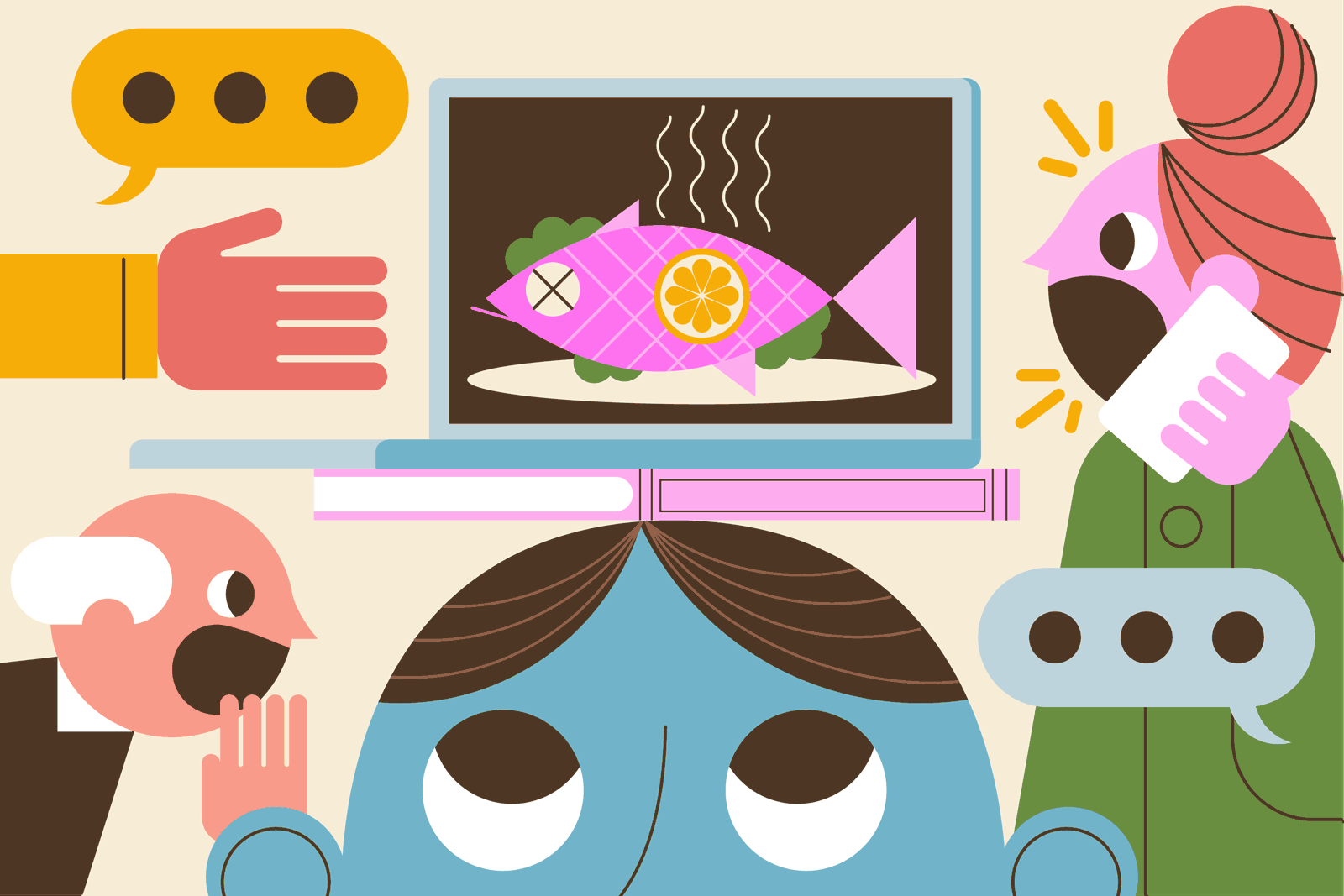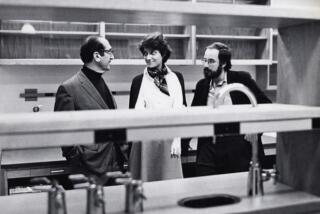Add charm to the equation
CAMBRIDGE, MASS. â The MIT students were stumped, or as stumped as a group of young adults with SAT scores dwarfing the average mortgage payment could be when faced with the question: Is it ever acceptable to dunk?
Quiet settled over the roomful of round tables, where not a backward cap, gum-chomping jaw nor buzzing, bleeping or chirping cellphone was to be seen. A young womanâs voice emerged from the back with the answer that etiquette expert Dawn Bryan was hoping to hear:
âBasically, you donât dunk unless itâs biscotti.â
If you read this while dunking a jelly doughnut into your coffee during breakfast with the boss, well, Charm School is for you, assuming youâre enough of a brainiac to get into the Massachusetts Institute of Technology to take part in its annual paean to politesse.
Now in its 20th year, the event is voluntary, but to its students and instructors, Charm School may be as beneficial to their future as an A in astrodynamics.
Thatâs especially true in this economy, said Alana Hamlett of MITâs Student Activities and Leadership Office, who oversees the gathering.
âWeâre giving our students the tools to be productive members of society, to be the whole package,â Hamlett said. âIt gets them thinking about who they are and what their impact and effect is, whether theyâre working on a team in an engineering company, or in a small group on a project, or interviewing for a job.â
MIT isnât the only science-focused institution to veer into the world of etiquette. Caltech offers Manners 101, âin preparation for the post-Caltech world of business receptions and dinner parties,â according to the course description. The several-hour non-credit class, offered a few times each year, runs students through a multi-course meal with a business etiquette consultant.
âWeâll serve up some challenging food to eat -- shellfish in the shell, really long pasta, Cornish game hen, you name it,â said course instructor Tom Mannion, Caltechâs director for student activities. Mannion also leads classes on food and wine pairing, and on cooking, which use studentsâ interest in chemistry and other physical sciences to open their eyes to etiquette issues.
âIf you know the basics of wine and food, youâre going to be set for life,â said Mannion, whose cooking students receive credit and each year produce a dinner for physicist Stephen Hawking.
Itâs not as if these MIT and Caltech students are ill-mannered oafs. But the world in which they have grown up is far different from those of previous generations, where table manners were taught at nightly sit-down family dinners, where texting, Facebooking and tweeting didnât exist, where graduates were not as likely to encounter colleagues from different ethnic and religious backgrounds.
How does an observant Muslim navigate a business breakfast during the fasting month of Ramadan, for example? (Politely explain why you wonât be eating but donât give a lecture on religion, skip the meeting or demand it be rescheduled.) Should a male employee hold the door for his female boss? (If you get to the door first, sure, and do it for your male colleagues as well -- itâs polite.) What to do if youâre expecting an important call but donât want to keep the cellphone out during lunch with the boss? (If itâs really that important, explain that youâre expecting a crucial call, put the ringer on silent, and if the phone lights up during the meal, excuse yourself to answer it.)
In addition, Mannion noted, the study habits and interests that get someone into a school like Caltech or MIT tend to isolate them in youth from the usual social outlets. Hours spent in the lab donât prepare you for attending a formal dance or meeting the girlfriendâs parents at a fancy restaurant with multiple utensils, glasses and finger bowls.
MITâs Charm School started in 1993 as a series of 20-minute sessions held over a four-hour period one day each winter term. It has evolved to meet the etiquette issues of the 21st century, and this year it began with the formal sit-down dinner course led by Bryan and ended with dozens of Doctorates of Charm being handed out to students like Jaclyn Belleville of Los Angeles, who learned among other things that she should not wear open-toed shoes to a job interview. Not even in California.
âItâs nice to have the opportunity to learn this stuff and to have it explained, instead of just stumbling across these issues,â Belleville said as she and dozens of other students admired their certificates while munching from a table laden with brownies, cookies and cakes.
Asa Adadey, a graduate student in computational biology from Silver Spring, Md., admitted that the free sit-down dinner was part of Charm Schoolâs appeal.
âBut I think things like this canât hurt,â said Adadey, who among other things learned not to cut his meat into lots of little pieces before eating it. âWho knows? Down the line I may find myself at a formal dinner.â
Several students were back for their second or third run through Charm School, an indication of interest in each yearâs new sessions. This year, there were classes on tweeting appropriately, operating in a cross-cultural workplace, grasping the basics of contemporary art and networking with older alums who can be key to helping students gain entry into the professional world.
âSpeak up!â Bob Ferrara, who graduated from MIT in 1967, good-naturedly advised a painfully soft-spoken sophomore at the networking session, noting that older alums often have hearing problems. âWe care about what youâre saying, but we have to be able to hear.â
At a nearby table, Leah Flynn, the director of student activities, was advising students on how to make a good first impression. âNever say âhey!â â she said. âIt just doesnât sit right.â
Bill Hecht, a 1961 MIT graduate, taught how to tie a bow tie, urging students to think about it in mathematical terms. âTying a bow tie and tying your shoes -- all are very simple examples of a branch of topology,â said Hecht, going on to discuss genes, proteins and knot theory as a group of students not only grasped what he was saying, but tied their ties while listening.
âYouâve got it! Youâve got the loop!â Hecht said excitedly as they maneuvered flaps of material through the loops tucked under their chins.
âItâs like the grown-up thing to do,â said Brian Gonzalez, explaining his desire to master the bow tie.
Thankfully, for the less mathematically inclined, there were plenty of more basic sessions. There was the art of the good handshake (donât grip too hard, and maintain eye contact); throwing a good party (have a clean toilet! greet each guest and make introductions); and dressing for work for men (wear socks).
âThese things, unfortunately or not, do matter,â said Tom Gearty, the neatly dressed MIT dean of student life who supplemented his dress tips with slide shows showing doâs and donâts. Fit matters, labels donât, said Gearty, underscoring his advice with a photograph of a star NBA player in a shapeless, baggy brown suit.
âHe does not have to look like a giant toilet paper tube just because heâs 7 feet tall,â Gearty said of the unfortunately dressed athlete. âDitch the T-shirts!â he told three young men who came up to thank him after one of his sessions, which ended with the advice to view your closet like an engineerâs tool kit, with the right number and style of shirts, trousers and jackets to meet every task.
Bryan, the etiquette expert, was the keynote speaker as well as the advisor at the sit-down dinner, which drew about 55 students. She said itâs not surprising, given todayâs âcubicle cultureâ in offices and the popularity of social networking and working from home, that manners have fallen by the wayside.
âThereâs not that much face-to-face interaction anymore,â Bryan said as the dinner wrapped up.
Across the tables, evidence of lessons learned, and missed, were clear. At some settings, utensils were placed neatly side by side at an angle on the empty plate, per Bryanâs instruction. At others, they lay at odd angles or formed large Xâs across the middle of the plate. One young woman licked her knife and fork clean, then placed them on the table on either side of the plate.
But two days later, as the Doctorate of Charm certificates were handed out, most students said they had come away with a new appreciation for the art of etiquette.
âIâll definitely be coming back next year, and the year after,â said Gabriel Reilly, a freshman, conceding that the emphasis on social networking and technology had made it too easy to ignore the more formal manners of older generations.
âThereâs a whole other dimension to manners that this generation is just finding out about,â said Reilly, who planned to take Geartyâs advice to spiff up his wardrobe and find a good tailor. Reilly also vowed to follow one of Bryanâs key bits of advice and begin writing thank-you notes.
Not via email -- using an actual pen and paper.
--







